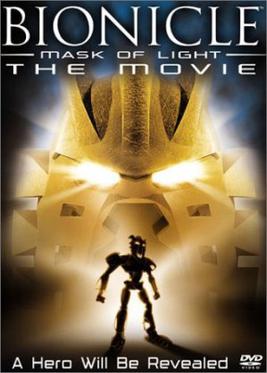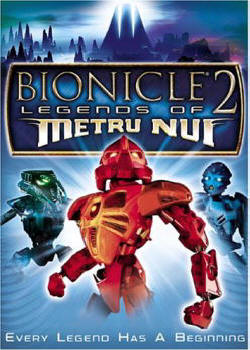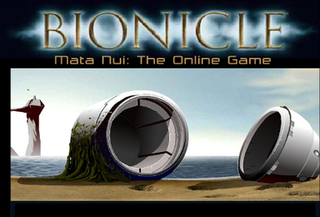
Super Mario World 2: Yoshi's Island is a 1995 platform game developed and published by Nintendo for the Super Nintendo Entertainment System (SNES). The player controls Yoshi, a friendly dinosaur, on a quest to reunite baby Mario with his brother Luigi, who has been kidnapped by Kamek. As a Super Mario series platformer, Yoshi runs and jumps to reach the end of the level while solving puzzles and collecting items with Mario's help. The game has a hand-drawn aesthetic and was the first in the franchise to have Yoshi as its main character, where it introduces his signature flutter jump and egg spawning abilities.

Sonic Advance is a 2001 platform game developed by Dimps for the Game Boy Advance (GBA). It was the first Sonic the Hedgehog game released on a Nintendo console with Sonic Adventure 2: Battle on the GameCube, and was produced in commemoration of the series' tenth anniversary. The story follows Sonic, Tails, Knuckles, and Amy as they journey to stop Doctor Eggman from taking over the world. Controlling a character, players are tasked with completing each level, defeating Eggman and his robot army, and collecting the seven Chaos Emeralds.
Bionicle is a line of Lego construction toys, marketed primarily towards 8-to-16-year-olds. The line originally launched in 2001 as a subsidiary of Lego's Technic series. Over the following decade, it became one of Lego's biggest-selling properties, turning into a franchise and being one of the many factors in saving the company from its financial crisis of the late 1990s. Despite a planned twenty-year tenure, the theme was discontinued in 2010, but was rebooted in 2015 for a further two years.

Harry Potter and the Philosopher's Stone is an action-adventure video game based on the 2001 film of the same name. Philosopher's Stone was initially released for Microsoft Windows and the PlayStation in November 2001. A different game bearing the same name was made two years later for the GameCube, PlayStation 2, and Xbox in December 2003. The versions on different platforms differ greatly from each other and do not follow the same level structures or gameplay, with somewhat varying stories as well.

Bionicle 3: Web of Shadows is a 2005 computer-animated science fantasy action film based on the Bionicle toy line by Lego and the third installment in the Bionicle film series. It is a direct sequel to Bionicle 2: Legends of Metru Nui, and largely adapts the 2005 storyline with the majority of events taking place before the previous film's ending. Like Legends of Metru Nui, Web of Shadows is a prequel to the first film, Bionicle: Mask of Light. This is the first Bionicle film to not be given a rating by the MPAA. It was released on DVD on October 11, 2005, by Buena Vista Home Entertainment under the Miramax Home Entertainment label.

Bionicle: Mask of Light, stylized as BIONICLE: Mask of Light — The Movie, is a 2003 computer-animated science fantasy action film based on the Bionicle toyline by Lego, and particularly serves as a direct adaptation to the latter half of the toyline's 2003 narrative. Set in a universe filled with bio-mechanical beings allied with classical element-themed tribes, the story follows two friends from the fire-based village of Ta-Koro on a quest to find the owner of the Mask of Light, a mystical artifact that can potentially defeat Makuta, an evil entity threatening the island.

Bionicle 2: Legends of Metru Nui is a 2004 computer-animated science fantasy action film and the second film based on Lego's Bionicle toy line. It is a prequel to the first film, Bionicle: Mask of Light. This film follows the 2004 storyline and was created using Lego elements from the Bionicle series. It is also the second of the two films in the franchise to be given a rating by the MPAA. It was released on DVD and VHS on October 19, 2004, by Buena Vista Home Entertainment under the Miramax Home Entertainment label.

Lego Star Wars II: The Original Trilogy is a 2006 Lego-themed action-adventure game developed by Traveller's Tales and published by LucasArts and TT Games Publishing. It was released on 11 September 2006. Part of the Lego Star Wars series, it is based on the Star Wars science fiction media franchise and Lego Group's Lego Star Wars construction toy line. It follows the events of the Star Wars films A New Hope, The Empire Strikes Back and Return of the Jedi. The game allows players to assume the roles of over 50 Lego versions of characters from the film series; customized characters can also be created. Camera movement was improved from its predecessor Lego Star Wars: The Video Game and the concept of "vehicle levels" was explored more thoroughly. The game was revealed at American International Toy Fair. Promotions for the game were set up at chain stores across the United States.

Bionicle is a 2003 platform video game developed by Argonaut Games and published by Electronic Arts and Lego Interactive for GameCube, PlayStation 2, Xbox, and Microsoft Windows. A port was released for Mac OS X, and a version was also developed for the Game Boy Advance. In the home console version, the player controls the Toa, elementally-powered warriors, as they traverse through levels; some levels are 3D platformers, while others utilize mechanics like snowboarding or lava surfing. The game's story, which takes creative liberties with the official Bionicle story, follows the Toa as they defend the island of Mata Nui from the return of the evil Makuta and his minions.

Bionicle Heroes is a 2006 video game published by Eidos Interactive and TT Games Publishing and based on Lego's Bionicle line of constructible action figures. The game was released in November 2006 on PlayStation 2, Xbox 360, GameCube, Microsoft Windows, Game Boy Advance, and Nintendo DS; a Nintendo Wii version was later released in April 2007. The home console and PC versions were developed by Traveller's Tales, while Amaze Entertainment developed the handheld versions. A version of the game for mobile phones, developed by Universomo, was also released. The home console and PC versions of the game are third-person shooters, while the Game Boy Advance version is a run 'n' gun shoot 'em up and the Nintendo DS version is a first-person shooter. The story of Bionicle Heroes, where the player seeks to liberate the island of Voya Nui and its inhabitants from the villainous Piraka, is not canon to the official Bionicle story.

The Legend of Zelda: A Link to the Past and Four Swords is a compilation of two action-adventure games co-developed by Nintendo EAD and Capcom and published by Nintendo for the Game Boy Advance. The game was released in December 2002 in North America and in March 2003 in Japan and Europe. The cartridge contains a modified port of A Link to the Past, originally released for the Super Nintendo Entertainment System in 1991, and an original multiplayer-only game titled Four Swords, which serves as the 9th installment in The Legend of Zelda series.

Lego Racers 2 is a Lego-themed racing video game developed by Attention to Detail, published by Lego Software and distributed in North America by Electronic Arts. It was first released in September 2001 for Microsoft Windows, PlayStation 2 and Game Boy Advance. It is the sequel to the 1999 game Lego Racers. This sequel was first revealed by Lego Software on August 20, 2001.

Mata Nui Online Game is a 2001 point-and-click adventure browser game developed by Templar Studios to promote the Lego Bionicle line of constructible action figures. The game follows Takua, a villager on the island of Mata Nui, as he explores the island, encountering other villagers and the Toa, heroic elemental warriors, on their quest to defeat the evil Makuta.

Lego Indiana Jones: The Original Adventures is a Lego-themed action-adventure video game developed by Traveller's Tales and published by LucasArts. The game allows players to recreate moments from the first three Indiana Jones films: Raiders of the Lost Ark (1981), Indiana Jones and the Temple of Doom (1984), and Indiana Jones and the Last Crusade (1989). It features the same cooperative play mode as seen in the Lego Star Wars video games, although it is restricted to local console play. The game was released on 3 June 2008 in the United States and Canada and 6 June in Europe. This game is based on the Lego Indiana Jones toy line. The Mac OS X version of the game was released on 4 December by Feral Interactive.

Lego Indiana Jones 2: The Adventure Continues is a 2009 action-adventure video game developed by Traveller's Tales and published by LucasArts. Based on the Indiana Jones franchise, it is the sequel to the 2008 video game Lego Indiana Jones: The Original Adventures. It was released for the Wii, Xbox 360, PlayStation 3, and Microsoft Windows; Feral Interactive published a version for Mac OS X in 2011. TT Fusion developed a handheld version for the Nintendo DS and PlayStation Portable that, although released under the same name, is different in gameplay and amount of content.

Lego Bionicle: Quest for the Toa is a 2001 action-adventure game developed by Saffire and published by Lego Software for the Game Boy Advance. Based on the Lego Group's Bionicle line of constructible action figures, the game follows Takua, a villager on the island of Mata Nui, on a quest to rescue the island's Turaga elders and summon the Toa, heroic elemental warriors destined to defeat the evil Makuta.

Lego Bionicle: The Legend of Mata Nui is a canceled action-adventure video game developed by Saffire. Based on the Lego Group's Bionicle line of constructible action figures, the game was intended to release on Microsoft Windows computers in late 2001 and the GameCube in early 2002. The game was designed as a direct sequel to Saffire's Game Boy Advance game Lego Bionicle: Quest for the Toa, which was released in October 2001. The story of The Legend of Mata Nui was meant to serve as a conclusion to the 2001 Bionicle story arc, focusing on the Toa, heroic elemental warriors destined to defeat the evil Makuta, who is attacking the island of Mata Nui with corrupted Rahi animals.
Bionicle was a line of toys and associated media made by Lego from 2000 to 2016.

















